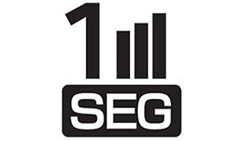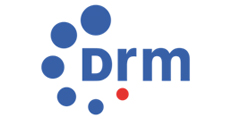Digital Radio

 SOLUTIONSDigital Radio
SOLUTIONSDigital Radio
DAB/DAB+
The DAB family of standards includes DAB and DAB+ for digital radio and DMB for mobile TV. They are flexible, global and open standards and are a means for transmission of terrestrial digital radio signals.
When the original DAB (Digital Audio Broadcasting) was first developed in the late 1980s, it was based on MPEG Audio Layer II coding, which is still commonly used in broadcasting today.
Since then, MPEG Audio Layer III, better known as MP3 has conquered the market of digital music players. Even though still the most successful technology on the market, MP3 has been overtaken in efficiency and performance by MPEG-4 (AAC).

This integration of AAC into DAB allowed higher efficiency, meaning the same audio quality at lower bitrates - hence the birth of DAB+.
Another important innovation was the addition of video/multimedia capabilities to Digital Audio Broadcasting, allowing DAB to become a digital mobile television platform DMB (Digital Multimedia Broadcasting) as well as a multimedia digital radio platform.
Both for DMB and DAB+ the technical basis remains DAB. In other words, the physical layer is still the same, just new applications, new transport protocols and a second error control coding layer was added. All three technologies can therefore be used alongside each other on one multiplex and basically use the same infrastructure, so there is a whole range of possible multiplex scenarios.
ISDB-T/1SEG
1seg is a mobile terrestrial digital audio/video and data broadcasting service in Japan, Argentina, Brazil, Chile, Uruguay and Peru. Service began experimentally during 2005 and commercially on April 1, 2006. In Brazil, the broadcast started in late 2007 in just a few cities, with a slight difference from Japanese 1seg: a 30 frame/s transmission, while in Japan they use a 15 frame/s transmission. The first mobile phone handsets for 1seg were sold by KDDI to consumers in autumn 2005.
ISDB-T, the terrestrial digital broadcast system used in Japan, Argentina, Brazil, Chile, Peru and Uruguay, is designed so that each channel is divided into 13 segments, with a further segment separating it from the next channel. An HDTV broadcast signal occupies 12 segments, leaving the remaining (13th) segment for mobile receivers.

DRM
Digital Radio Mondiale (abbreviated DRM; mondiale being Italian and French for "worldwide") is a set of digital audio broadcasting technologies designed to work over the bands currently used for AM broadcasting, particularly shortwave. DRM can fit more channels than AM, at higher quality, into a given amount of bandwidth, using various MPEG-4 codecs.

Digital Radio Mondiale is also the name of the international non-profit consortium designing and implementing the platform. Radio France Internationale, TeleDiffusion de France, BBC World Service, Deutsche Welle, Voice of America, Telefunken (now Transradio) and Thomcast (now Technicolor SA) took part at the formation of the DRM consortium.
The principle of DRM is that bandwidth is the limited element, and computer processing power is cheap; modern CPU-intensive audio compression techniques enable more efficient use of available bandwidth, at the expense of processing resources.
V-Low Multimedia Broadcasting
V-Low multimedia broadcasting is regulated as a core terrestrial broadcasting service for mobile receivers, using the 99 to 108 MHz band (V-High : 207.5 to 222 MHz). This definition indicates that it is a core broadcasting service intended to be installed and used in automobiles and other terrestrial vehicles, as well as portable receivers, it excludes satellite core broadcasting services. It does not indicate what will be broadcast, as did conventional television (video and audio) and radio (audio), so the system is able to broadcast various other types of content in addition to real-time broadcast of video and audio, such as stored broadcasts, which store data on the receiver and use it later, and IP datacasts(IPDC), which transmit IP packets used on the Internet as-is over the broadcast signal.
V-Low broadcasting has realized local multimedia broadcasting, and its business is in progress by TOKYO FM, JFN and etc. V-Low provides Real-time audio, video multimedia, data broadcasting(Digital Signage) and multi-channel broadcasting. Furthermore, experiencing Tsunami in 2011, Japan has put great emphasis on Disaster radio and its necessity and, using V-Low they make the best use of Disaster Prevention System. Currently, trial broadcasting has been started in Tokyo, Osaki, Fukuoka since February, 2015.




